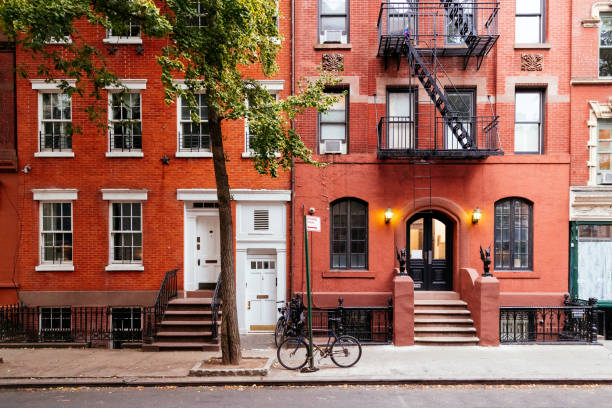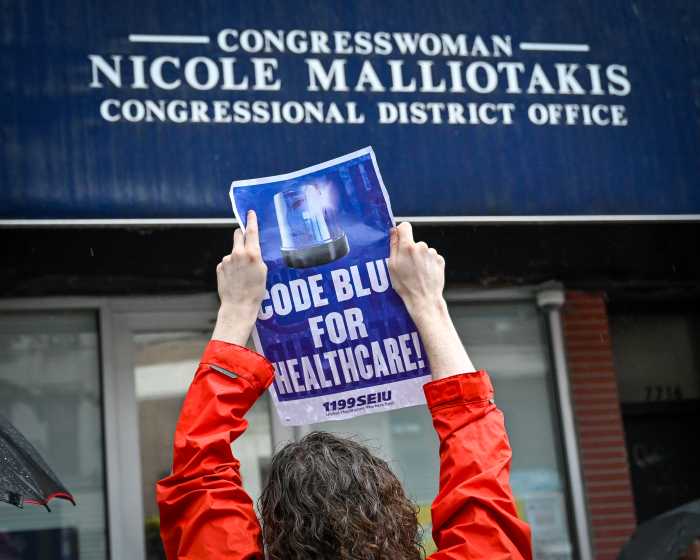By Josh Rogers
Bob Marley was singing “don’t worry ‘bout a thing” but Bob Townley was thinking less about reggae and worrying more about the funk.
The rum, tequila and beer flowed in modest amounts Halloween night on Pier 25 as Townley threw a party to mark the last night his Manhattan Youth group had the lease to run the Tribeca pier’s activities. The decaying pier and the adjacent Pier 26 will soon be demolished to build new, longer piers and the rest of the Hudson River Park’s $70-million Tribeca segment.
“Funk” was the word partygoers kept using to summarize the homegrown feel of Pier 25 where chickens roost, kids play mini-golf and the barbeque is usually fired up – a feeling many fear will be lost when the piers reopen in three years.
Townley and several dozen partygoers walked off the N. Moore St. pier together and closed the gate at 9:30 p.m. But there were still picnic tables to clean and garbage to be collected so Townley and his friends and staff went back to tidy up a place that will be demolished this winter.
“Bob, I’m thinking why are we cleaning up,” a friend asked, but people continued to clean.
Some had been enjoying the pier for over a decade and were not ready to say goodbye. Townley’s group, which leased the pier for $20,000 a year, is off, but it will remain open to the public until Nov. 12. Pier 26, which has housed the Downtown Boathouse and the River Project, closes on Sunday.
In addition to the barbecue snack stand and the rundown mini-golf course – once used by the Amazon club on Pier 25 – the pier also has the historic Yankee Ferry, beach volleyball courts (also used by Amazon before the pier opened to the public), an outdoor sculpture area where there’s a children’s art program, and a sprinkler play area.
Cyclists, joggers and walkers would often stop on the pier to rest, or take part in some of the organized programs such as outdoor movie screenings, dances and concerts.
“The funk has to stay in the park,” said Tom Fox, the first president of the now defunct Hudson River Park Conservancy. “You can’t legislate the funk. Shame on the park if they can’t find a way to keep this spirit.”
Fox remembers fighting with the state Dept. of Transportation about building a temporary bikeway between Route 9A and the river in the ‘90s.
He and Vince McGowan, who worked with Fox at the conservancy, got Amazon off the pier, which opened the door to opening up the pier to the public.
McGowan, who now is an executive with the Battery Park City Parks Conservancy, said over the years he heard many crazy ideas for the pier but the craziest one was a drive-through pizza parlor with a dry cleaner.
He, Fox and Nancy Owens, were among the many at the party reminiscing about the piers. Owens, a landscape architect who lives in Tribeca, remembered Hudson Park Conservancy officials calling her down to the pier on short notice to help them unload and place benches on Pier 25. “You wanted to be involved because you felt like you were needed,” she said.
The new piers will be longer and have many of the same things that are there now – beach volleyball, places for historic boats to dock, mini-golf, a kayak boathouse, marine life study center and will have room for a turf field and more plantings.
Townley said many people mistakenly think the Tribeca piers will look like the park’s refurbished piers in the Village, which some have criticized as being too manicured and passive. Townley said the new Tribeca piers “won’t be funky” but they will be as good as long as community groups still have the same type of access.
Chris Martin, spokesperson for the Hudson River Park Trust, which is building the park as the successor organization to the Hudson River Park Conservancy, has heard the concerns about the loss of local planning and thinks its unfounded. The design for the piers came as a result of numerous public meetings in which the Trust changed the plan to meet requests made by Community Board 1 and others.
When the park reopens, residents will still have a role to play, Martin said. “The community is still there,” he said. “They’re not going anywhere.”
Connie Fishman, president of the Trust, said in an interview earlier this year that she hopes that things like free graduation parties for local schools return to Pier 25 in three years.
Signe Nielsen, a landscape architect from Tribeca, is working on the final design for the park segment. Martin said the design for the piers should be done in December and the upland area by April. The Trust, a state-city authority, hopes to begin demolition for Pier 25 followed by Pier 26 this year.
The $70 million comes from the Lower Manhattan Development Corporation, a state-city authority set up to help Downtown recover from 9/11. After the attack, Pier 25 was closed to enable debris collected from the World Trade Center site to be loaded on a nearby barge.
The pier reopened in the spring of 2002, much to the delight of the park’s regulars.
Carolena, a jazz musician who uses just her first name, said she began skating to the pier ten years ago and she grew to love the open feeling. “It was a total sanctuary from being stuck in the East Village,” she said.
She played taps as she and the rest of the partygoers left, but she sounded more optimistic when she thought about whether the piers will have the same feeling when they reopen. “I think we’ll make it happen,” said Carolena. “We have to.”
google_ad_client = “pub-6226499064891091”;
google_ad_width = 468;
google_ad_height = 60;
google_ad_format = “468x60_as”;
google_ad_channel =”0606561524″;
google_color_border = “336699”;
google_color_bg = “FFFFFF”;
google_color_link = “0000FF”;
google_color_url = “008000”;
google_color_text = “000000”;
//–>
src=”https://pagead2.googlesyndication.com/pagead/show_ads.js”>
WWW Downtown Express
































